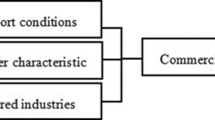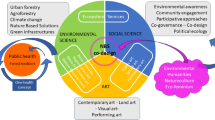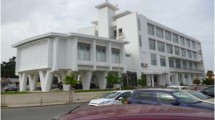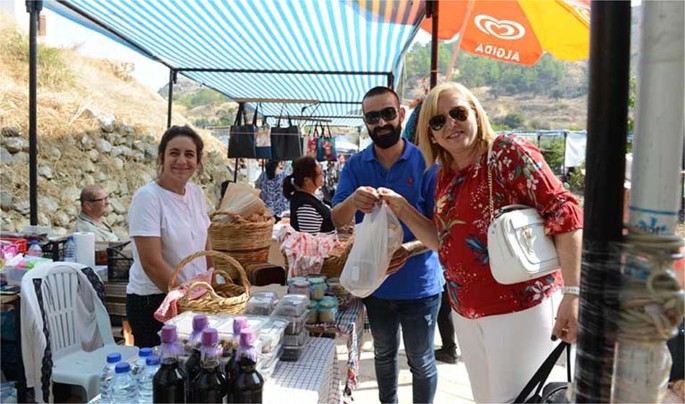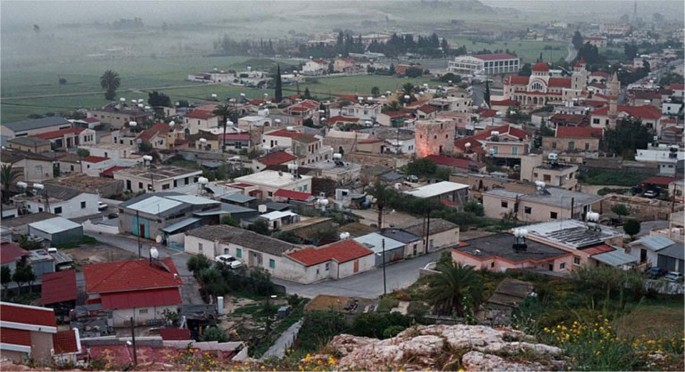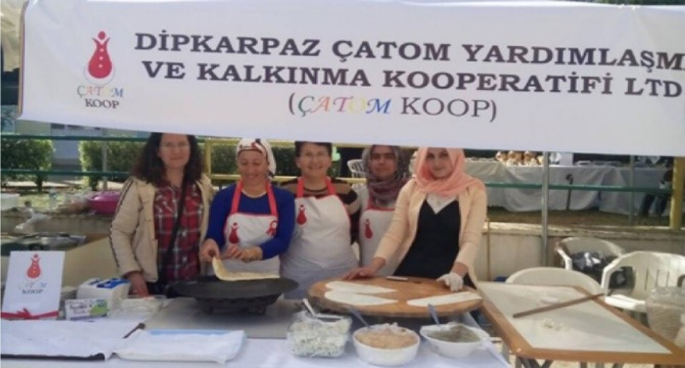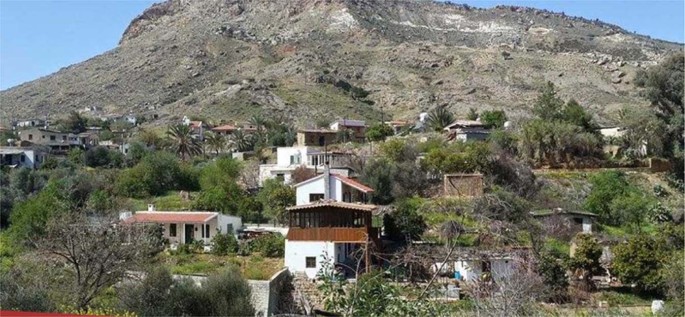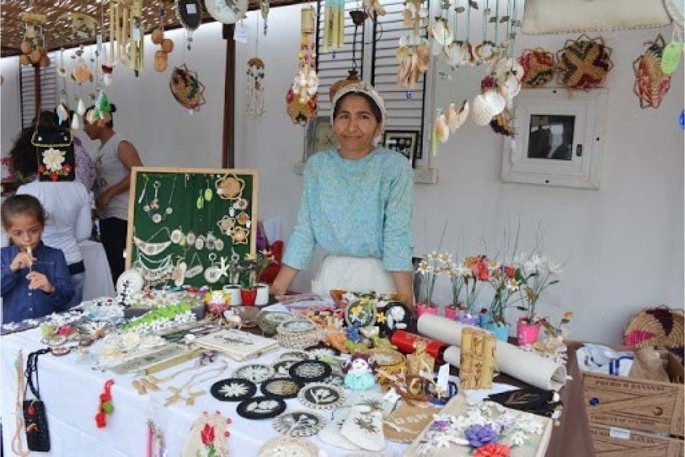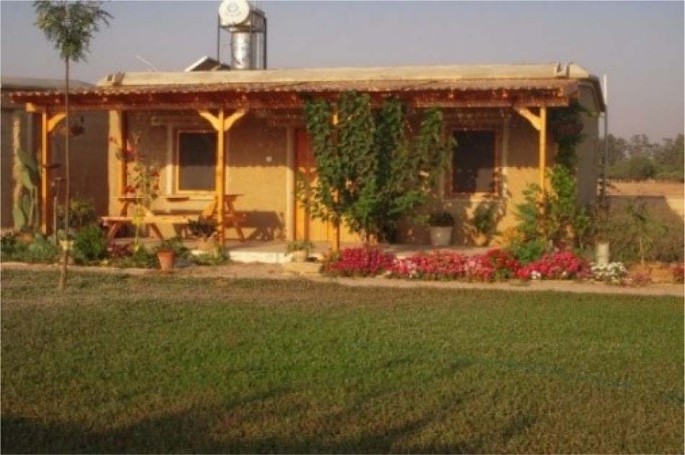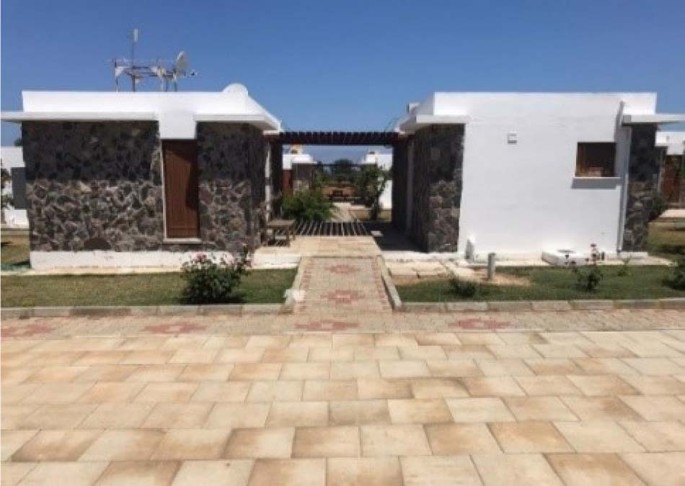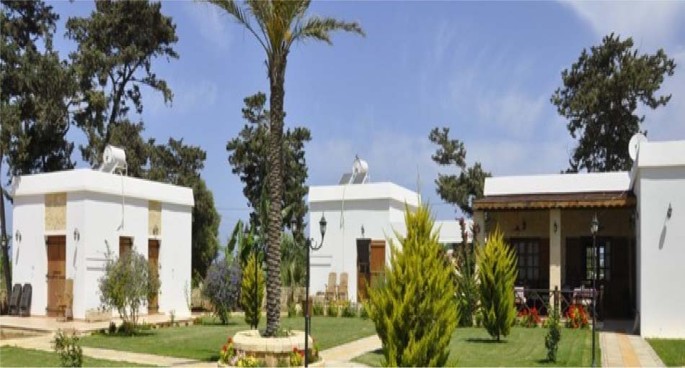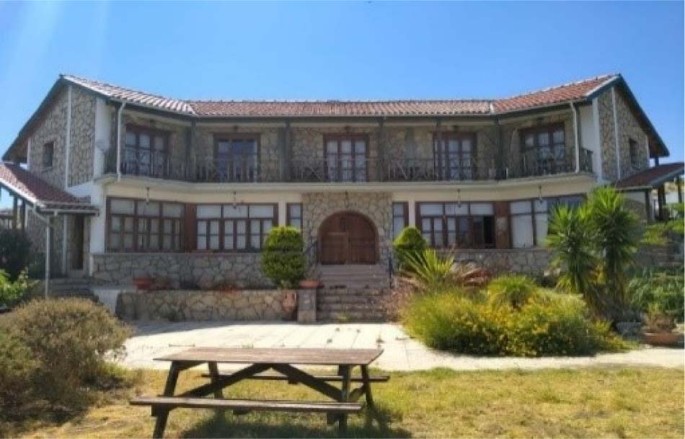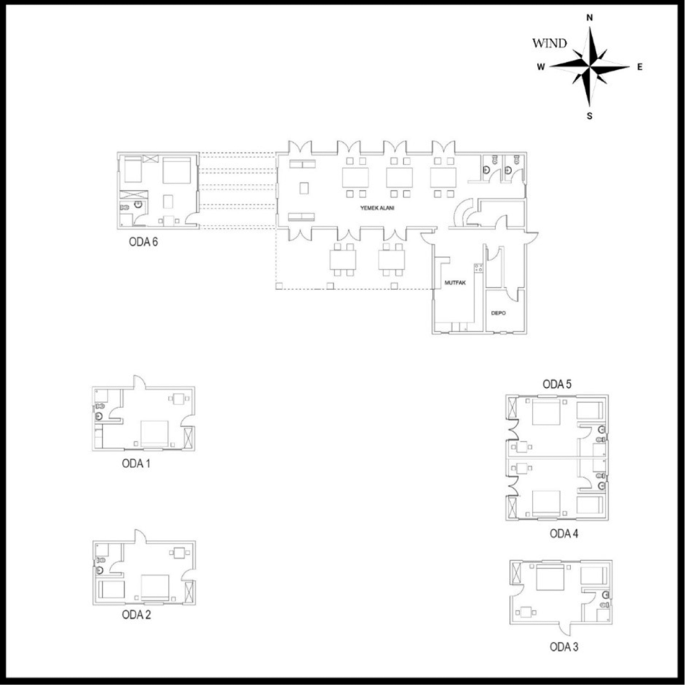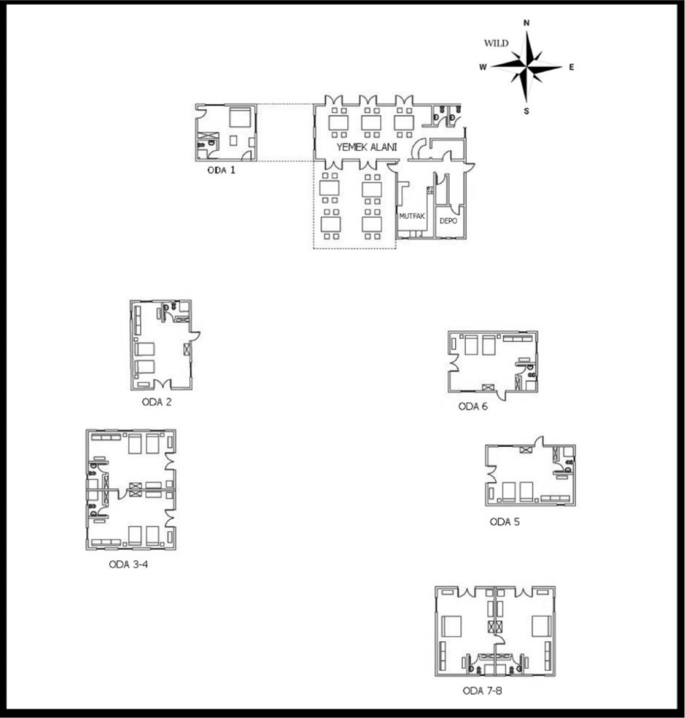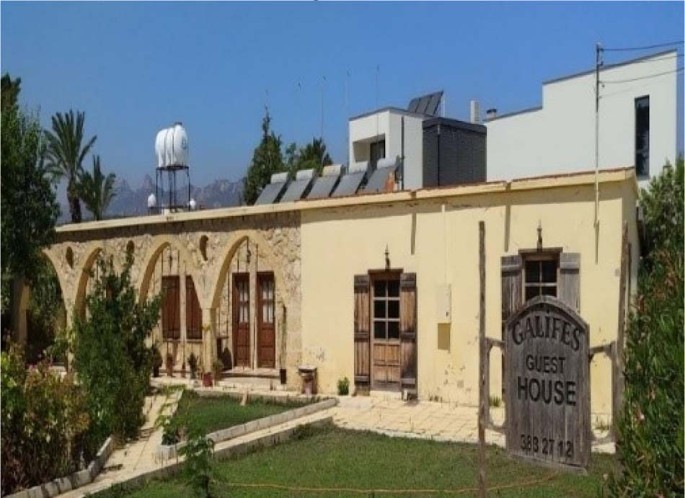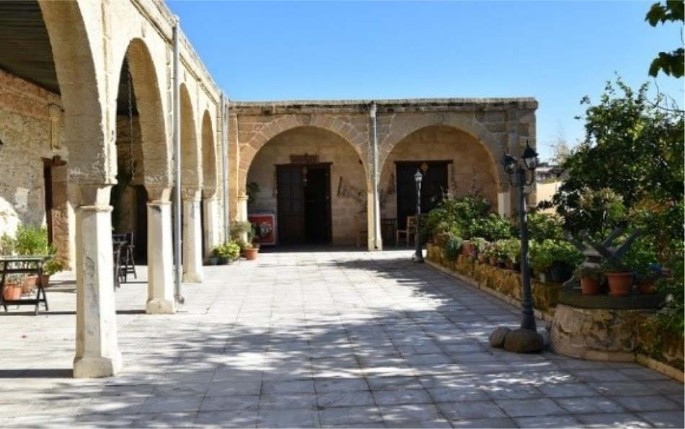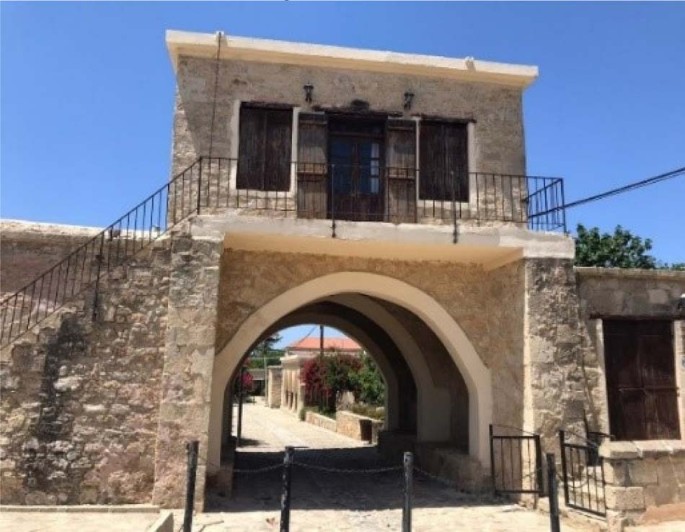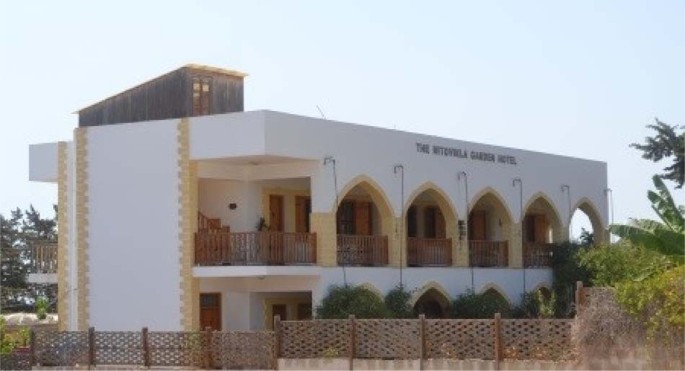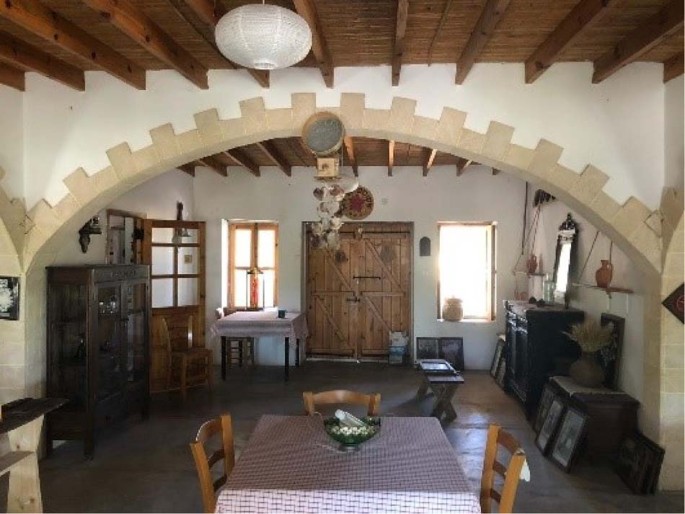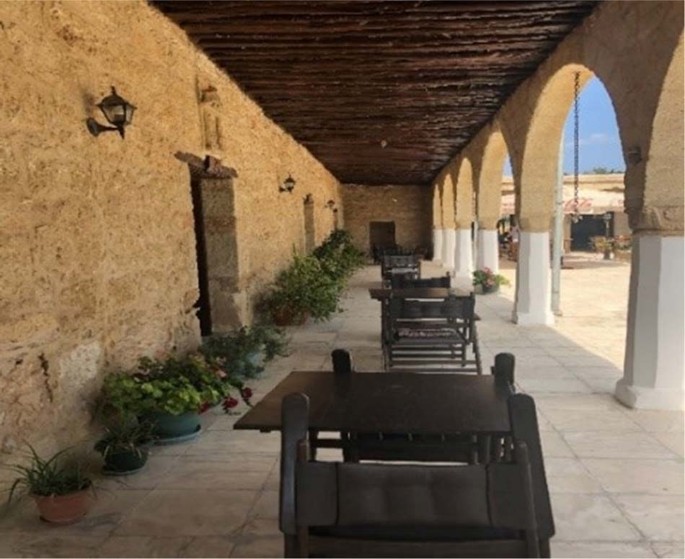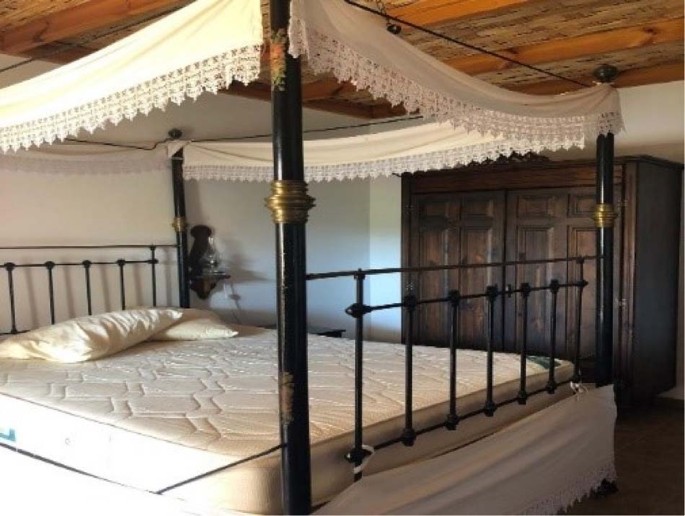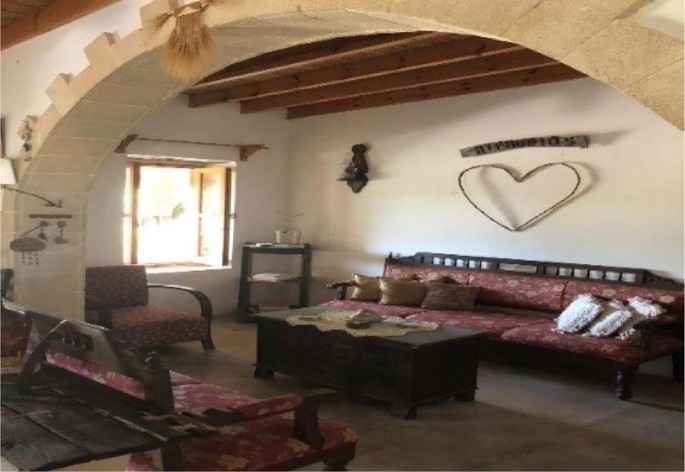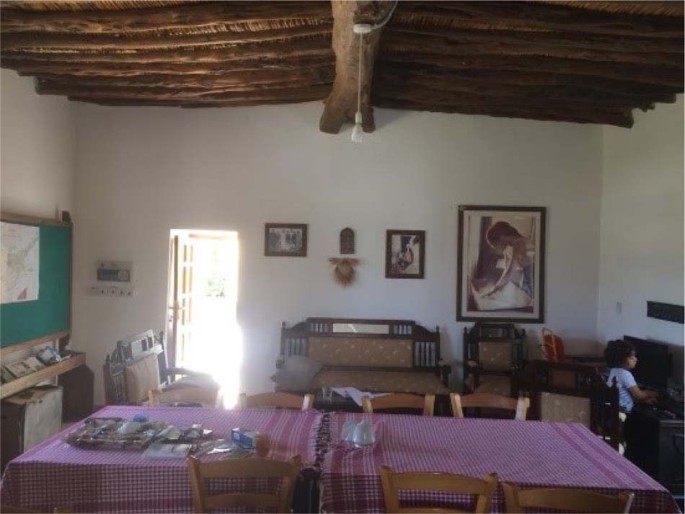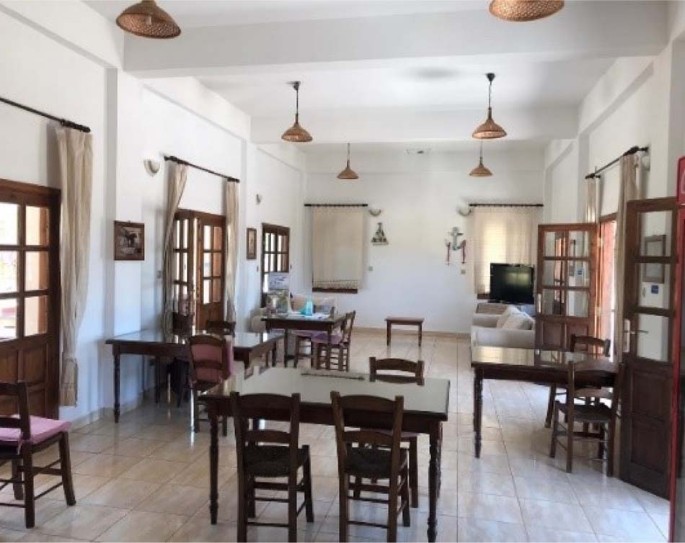Abstract
Tourism, a socioeconomic activity generally defined as an exchange of culture, is diversified by its different purposes. Ecotourism, which emerged and has been constantly developing in the last quarter century, is based on the principles of protecting the natural environment and recognising the original local culture in an interaction with the environment. As significant components of tourism activities, accommodation structures play a major role in the realisation of ecotourism. Due to its location, cultural heritage and rich history together with its Mediterranean climate, Cyprus is an especially important tourism destination for people from Middle East and European countries. The traditional living culture in this small island country has created a huge demand for ecotourism in Cyprus. The ecotourism industry in Cyprus provides housing structures restored with the traditional architectural characteristics of the island as well as new buildings. The new accommodation structures should be constructed in compliance with the traditional architectural characteristics of Cyprus to contribute to the island’s cultural tourism. Our study was conducted through a literature review regarding the main concepts of tourism and ecotourism and on-site field work on the architectural characteristics of existing ecotourism accommodation structures located in the ecotourism villages of Cyprus. In consideration of the field study findings, this study also proposes recommendations that could be a model for the architectural characteristics of new accommodation structures to be constructed for sustainable ecotourism in Cyprus. Within the framework of our study, the location, construction date, and architectural characteristics of fifteen accommodation structures were selected from Cyprus ecotourism villages; their layout and sketch drawings were completed using measurements and observations, while outdoor-indoor photographs were taken. As a result of these findings and based on the common architectural characteristics of existing ecotourism accommodation structures, the architectural characteristics of future accommodation structures have been identified accordingly.
Similar content being viewed by others
Introduction
Tourism is generally defined as a consumer’s act of travelling and obtaining temporary accommodation at a place other than their permanent residence for holiday relaxation and recreational purposes (Yörük, 2003). Tourism, which is performed by changing locations for various reasons, comprises social, cultural, sports and special interest activities. Specific places and regions are chosen for different purposes and activities, making it possible to diversify. Accommodation buildings, among other tourism facilities, are vital components of tourism activities. Accommodation buildings that first provide a safe shelter for individuals and meet their various needs, such as comfort, relaxation, food and beverages, and entertainment, are categorised as hotels, motels, holiday resorts, bed and breakfasts, mountain resorts and thermal facilities (Kozak et al., 2014).
With its significant place among the various types of tourism, ecotourism, which emerged in the 1980s, is an important tourism activity for cultural exchange between countries. Ecotourism, namely, ecological tourism, can be defined as travel to natural and ecologically uninterrupted areas or regions (Özhan, 2007). Ecotourism accommodation buildings have characteristics that differ from the others, and they are similar to boutique hotels that are compatible with their natural surroundings while providing quality services. Eco-accommodation structures minimise the environmental impact on natural and cultural assets and involve landscape design and gardens and sustainable design construction, use green technologies, integrate the local community into the development and implementation of eco-accommodation buildings, and ensure environmental and cultural education for its visitors (Hakim and Nakagoshi, 2014). Accommodation structures, which are crucial for tourism activities, play an important role in the promotion and maintenance of traditional living culture for their visitors.
For centuries, Cyprus has been an important tourism centre due to its geographical location, Mediterranean climate, rich history and cultural heritage. As an island in the Mediterranean, Cyprus connected with other countries via the sea and maintained trade relations. The arrival of people from other countries began with British administrative and military officers during the British administration (1878–1960) (Turkan, 2008). After the division of the island in 1974 into north and south, Ercan Airport was opened in 1976, connecting the north with the outside world through means other than sea transportation. In the early 1980s, tourism became more active in Cyprus, and small holiday resorts were built and opened (Bıçak and Turkan, 2018). Since the 2000s, most accommodation buildings, particularly those along the eastern and northern coastlines, have been multi-storey and luxurious modern buildings that provide services based on the triangle of sea, bed, and sea (Ölçer, 2011; Emekli, 2003).
The residents of the island managed to continue their rural life and traditional living culture since the distances between the settlements are not too far and transportation is easy. The sustainable traditional lifestyle on the island provided positive conditions for ecotourism. Since 2005, Bağlıköy (Ambelikou), Büyükkonuk (Komi Kebir) and Dipkarpaz (Risokarpaso) were selected for the introduction of ecotourism, and the houses built with local architectural characteristics were restored and transformed into boutique hotel-style buildings. Annual ecotourism days are organised for the exhibition and selling of local food, beverages and handcrafts; and folk dance and various rural life events are held, all of which promotes and preserves the traditional life and cultural assets of Cyprus.
Ecotourism has recently become popular in Cypriot domestic and foreign tourism. The housing buildings at the related villages reflecting the traditional architectural characteristics of the island have been restored for use in ecotourism, and additional spaces and new accommodation buildings have been constructed to eliminate the shortcomings. These ecotourism accommodation buildings were chosen as the subject matter of our study with the aim of contributing to the improvement and sustainability of ecotourism since the traditional cultural assets of the island can only be promoted through accommodation buildings with traditional architectural characteristics. Because of this, future ecotourism accommodation buildings should be designed and built with the traditional architectural nature of the island.
Since the early 2000s, ecotourism has become so important among worldwide tourism activities that Cyprus’s domestic and foreign tourism visitors prefer ecotourism as their first choice. In line with such choices, there is an increasing need for accommodation buildings as a significant component in ecotourism. Considering the findings from our field studies on the architectural characteristics of the existing accommodation buildings in ecotourism villages, which were conducted to support the sustainability of ecotourism activities in Cyprus, the aim of this study is to make recommendations on the architectural characteristics of future ecotourism accommodation buildings that would promote and maintain the traditional living culture and all other local cultural heritage through spaces with traditional architectural characteristics of the island furnished with local authentic fittings.
Cyprus is an important tourism destination due to its location, rich historical and cultural heritage and Mediterranean climate (Bıçak and Turkan, 2018). Cyprus is particularly compatible with the notion of ecotourism since rural areas that are very close to urban life opportunities yet merged with nature still operate in a traditional way. The existing accommodation buildings used in tourism activities are not sufficient in terms of reflecting and promoting the historical pattern, traditional architecture and living culture of the island; hence, they cannot be useful for ecotourism. Therefore, there are not enough accommodation buildings in the villages to meet the increasing demand for ecotourism. As a result of our study, we identified the architectural characteristics that have a major role in the island’s ecotourism activities and proposed these for the design of accommodation buildings. While there are various studies on ecotourism in Cyprus, our study is the first detailed and comprehensive study on how ecotourism accommodation buildings contribute to the promotion of ecotourism through future accommodation buildings with the proposed architectural characteristics. Moreover, the study findings make a major contribution to the correct performance and sustainability of ecotourism through the new ecotourism facilities to be built with the proposed architectural characteristics.
Starting from the concept of tourism as the basis of our research, the types of tourism, the accommodations in tourism, the concept of ecotourism and its properties and effects, the ecotourism villages in Cyprus, the architectural characteristics of accommodation buildings in such villages and the architectural characteristic recommendations for the design of new ecotourism accommodation buildings are the focus of our study.
The research process table is shown in Table 1.
Theoretical framework
Ecotourism
Ecotourism is generally defined as nature-conscious travel that aims to protect the environment and consider the welfare of the local community (Ayman, 2013). In other words, the concept of ecotourism comprises travels to visit or study the landscape, flora and fauna, and activities unique to such places (Soykan, 2003). According to Elizabeth Boo, ecotourism is nature-oriented tourism protecting nature and improving tourism by fundraising for parks, protected areas and surrounding communities and organising environmental training courses for the local community (Erkut, 2005). Kutay noted that ecotourism is considered a development model at natural sites and is planned as a part of biological source-based tourism within a socioeconomic structure (Özyaba, 2001). The World Tourism Organisation recognises ecotourism as responsible travel to natural areas with the aim of protecting the environment and enhancing the welfare of the local community. Ecotourism, which has grown and continues to grow, involves travelling to a place where the natural environment and unique culture are protected and where tourists can interact with their surroundings to learn about the local community and culture (Özhan, 2007). The concept of ecotourism was first used by Hector Ceballos-Lascurain in 1983. According to Hector Ceballos-Lascurain, ecotourism has the least impact on the environment; it covers visits to unspoiled or unpolluted natural areas with the special purpose of analysing, observing and living with the landscape, wildlife and rural concepts. The most important aspect of ecotourism is the inclusion of the local community; hence, socioeconomic benefits are acquired (Boo, 1993).
The trend in ecotourism has the fastest growth among the worldwide tourism industries. The most important factors that provide significance to ecotourism are as follows (Hawkins and Lamoureux, 2001):
-
International awareness.
-
Desire for nature-oriented experience.
-
Necessity to preserve natural resources for future generations.
The main characteristics of ecotourism are respect, responsibility and sustainability. The following four principles are always emphasised in all definitions of ecotourism (Erdoğan, 2003; Polat, 2008):
-
Natural environment.
-
Ecological and cultural sustainability.
-
Education and explanation of topic.
-
Economic benefits at the local level.
Ecotourism also aims to benefit from both natural and cultural features. The rural life, mountain and village houses chosen for accommodation, the tastes of local cuisine and the ability to camp in unspoiled nature are some of the characteristics of ecotourism activities. With respect to ecotourism, which focuses on existing resources, the main aim is to transfer daily life habits towards an activity (Polat, 2008).
Ecotourism accommodation buildings, which have a different approach than the accommodations for other types of tourism, are mainly boutique hotels that fit within their natural surroundings and provide quality service. They are mainly small-scale establishments that operate as family businesses.
Ecolodges were first introduced at the First International Forum on Ecological Accommodation in 1994 in the US Virgin Islands. In 1995, a guideline about ecolodge facilities, “The First International Ecolodge Guidelines”, was developed during an international conference held in Costa Rica. Consequently, the first international definition of ecolodge facilities was provided accordingly. Based on this definition, the essential components of the first ecolodge facility are as follows (Wood, 2002; Demir and Çevirgen, 2006):
-
Protect the natural and cultural elements of its surroundings.
-
Minimal negative impact on the natural environment during construction.
-
The physical and cultural texture of the facility should blend with the local architectural styles and scenery and colours.
-
Use of alternative practices to meet long-term water demands and minimise water consumption.
-
Solid waste and wastewater systems should be established with effective management.
-
Contribute to sustainable development of the local community through research programs.
-
Efforts to collaborate with the local community.
-
Offer ecological and cultural training courses from which local employees and tourists can also benefit.
-
Meet the energy needs by merging passive designs and modern installations with sustainable use.
Ecotourism in Cyprus
Cyprus is a small island where the industry sector has not developed very much, and the production sector mainly focuses on agriculture and animal husbandry. The local community have maintained their rural life and traditional living culture since the distances between the settlements are not too far and transportation is easy. The sustainable traditional lifestyle on the island has provided positive conditions for ecotourism.
Büyükkonuk (Komi Kebir) was chosen as a pilot ecotourism village in 2005 to revive tourism in Cyprus. Within the scope of such activities, the locals were provided training about ecotourism, and several conferences were held as well. Later, with the ecotourism activities initiated in Bağlıköy (Ampelikou) and Dipkarpaz (Rizokarpaso), ecotourism in Cyprus became popular and developed. Special ecotourism days are organised annually in ecotourism villages where local food and beverages and handcrafts are sold and folk dance shows and various rural life activities are held, enabling the promotion and maintenance of the traditional lifestyle and cultural assets of Cyprus. The houses built with local architectural characteristics are restored and transformed into boutique hotels to serve their visitors.
Bağlıköy (Ampelikou) is a village in Lefke, Cyprus, with 200 habitants, stone streets, houses built with traditional materials and a richness in nature where people still live in a traditional way (Tietze, 2002; LEKAD, 2009). Bağlıköy is a typical eco-village due to its traditional architectural texture, traditional lifestyle, local produce from fertile soils, traditional handcrafts and Cyprus cuisine. It became an eco-village in 2013, its locals were trained about ecotourism, and the Ecotourism Volunteers Association was established, which ensured awareness of natural beauties and the environment and protected cultural heritage items and local texture. As a part of ecotourism activities, village houses were restored as accommodation buildings, local products became much more important, and an annual eco-day event was planned (Figs. 1 and 2).
Ampelikou: a view from eco-day. https://www.havadiskibris.com/baglikoyde-paluze-tadinda-etkinlik-2/.
Dipkarpaz (Rizokarpaso) village is in the district of İskele with a population of 2349. It is located on the far east tip of the Karpasia Peninsula and is disconnected from urban life due to the insufficiency of the transportation axis and means as well as its distance from cities. However, this has favoured the survival of traditional island life in the village with all of its properties. The ecotourism facilities in the Karpasia Peninsula were first opened in 2009, and the first one was called ‘Arch House’. The traditional houses that have the historical texture of Dipkarpaz were restored and transformed into ecotourism eligible accommodation facilities. In 2013, the “Multi-Purpose Community Centre” (ÇATOM Coop.), the first Women’s Cooperative in Dipkarpaz, was founded to develop and sustain ecotourism and to support women and farmers in village life. Products made by women are sold on eco-day festivals and fairs under the brand of this cooperative (Figs. 3 and 4).
With its population of 2860 people, Büyükkonuk (Komi Kebir) is a settlement built on top of a necropolis from the Bronze Age (Tuğun and Karaman, 2014). In 2005, Büyükkonuk village was declared a pilot village for eco- and agrotourism sites with the aim of reviving tourism in the area. Hence, trainings and seminars on ecotourism were organised for the locals. In collaboration with the SME Centre, several workshops were held to merge the local community with the concept of ecotourism. The handcrafts of Büyükkonuk, cultural events and festivals are important both for visitor attraction and for improving domestic and foreign tourism. The ‘Eco-Day’ festival is held in Büyükkonuk twice a year in May and October with major participation to support the local community in the village and preserve the local cuisine. The objectives of the eco-day festival are to improve environmental awareness, promote local and regional heritage and sell the local delicacies and the natural and organic produce of the local community. The very old traditional houses at the village square have been restored and put in service as accommodation buildings and restaurants for ecotourism activities. Büyükkonuk, the first eco-village in the region, serves ecotourism with its history, social and cultural assets and local architectural texture (Figs. 5 and 6).
Methodology
Our research was conducted with a qualitative method covering a literature review on basic concepts and on-site field work. Therefore, an in-depth literature review on the concepts of tourism and ecotourism in particular was performed as the basis of our study, examining the types of tourism accommodation buildings, ecotourism accommodation buildings and ecotourism in Cyprus through the related journals, books, articles and thesis works.
As part of the meetings with the related institutions regarding the accommodation buildings in the ecotourism villages in Cyprus, which is the main subject matter of our study, the relevant institutions, associations and individuals whom we contacted provided the following information: the documentation on the registered tourism accommodation buildings and ecotourism accommodation buildings from the Ministry of Tourism and Environment; the information on the location, current situation and contact details of ecotourism accommodation building owners in the related villages from the Municipalities of Lefke, Büyükkonuk and Dipkarpaz; the information on the role of Lefke in ecotourism, ecotourism villages in the area and the procedures on how the ecotourism accommodation buildings in Bağlıköy, Yeşilırmak and Yeşilyurt became a part of ecotourism from the Chairman of the Lefke Tourism Association; the detailed information on the integration of ecotourism accommodation buildings in Karpasia into tourism activities and their contribution from the Chairman of Karpasia Eco-Agrotourism Cooperative and Board Members and officials from the Ecotourism Volunteers Association; the information and documentation on the history of existing accommodation buildings, restoration process, official procedures in transforming accommodation buildings and the benefit of such buildings for the regional ecotourism from the owners/managers of the existing accommodation buildings.
No surveys were used for our study. Only several interviews were held with the related persons and institutions for information purposes.
A total of fifteen ecotourism accommodation buildings were analysed on-site through the field studies performed examining the accommodation buildings in the ecotourism villages in Cyprus, which are Bağlıköy (Ambelikou), Büyükkonuk (Komi Kebir), Dipkarpaz (Risokarpaso), Yeşilyurt (Pentageia), Yeşilırmak (Limnitis) and Kumyalı (Kumyalik). Outputs were generated on the number of floors and the architectural characteristics, the courtyards that provide indoor-outdoor space, the building materials, the construction systems, the room systems, the façade details, the interior elements and the furnishings. The measurements and observations required to identify the spaces in buildings and determine the functional relation between the spaces were performed, and their individual layout sketches were developed. The indoor and outdoor spaces of buildings were photographed to identify the existing status of accommodation buildings and support our study.
Our field study findings on the architectural characteristics of ecotourism accommodation buildings are presented via a systematic table. The common architectural characteristics of existing ecotourism accommodation buildings were identified based on follow-up assessments.
Pursuant to the findings generated from our interviews and architectural observations, the majority of ecotourism accommodation buildings are built with the traditional architectural characteristics. Some of the old buildings were restored and became a part of ecotourism, while the others are new buildings partially reflecting the traditional architectural characteristics. Future accommodation buildings should have the properties to reflect traditional architecture and living culture in their location, layout, material, and furnishing, all of which would maintain and ensure the sustainability of ecotourism. Hence, our study provides architectural characteristic recommendations for future ecotourism accommodation buildings.
The following table reflects our research plan, outline of our activities and overall process (Table 2).
Case study (ecotourism accommodation buildings in Cyprus)
Within the framework of our field study conducted on ecotourism accommodation buildings in Cyprus, the layout sketches of two accommodation buildings in Bağlıköy (Ampelikou) (Bağ Evi, Ambelikou Guest House), three in Büyükkonuk (Komi Kebir) (Ayphodios Guest House, Asut Guest House, Galifes Guest House), six in Dipkarpaz (Rizokarpaso) (Castle Carpasia Guest House, Karpasia Natura Guest House, Villa Lembos Hotel, Glaro Garden Hotel, Revaklı Ev Guest House, Karpaz Arch House) and one in Yeşilyurt (Pentageia) (Pendaya Eco Garden), two in Yeşilırmak (Limnitis) (Vouni King Hotel, Erson Hoca’s Organic Farm) and one in Kumyalı (Kumyalik) (Nitovikla Garden Hotel) were generated, and the buildings were photographed upon visiting them on-site and identifying their architectural characteristics.
Among the fifteen ecotourism accommodation buildings that are under the scope of our research, thirteen are in the village centre where active rural life continues, and two of them (Ayphodios Guest House, Erson Hoca’s Organic Farm) are located outside the villages. They are not high-storey buildings, yet all of them have courtyards.
The accommodation buildings are mainly built with masonry construction using traditional materials such as ashlar, adobe and wood. In some of the accommodation buildings (Villa Lembos, Glaro Garden Hotel, Erson Hoca’s Organic Farm, Karpasia Natura Guest House, Vouni King Hotel, Nitovikla Garden Hotel), reinforced concrete carcass systems and modern materials were also used together with masonry. Adobe was only used in the walls, stone walls, door-window frames, arch and wall coverings, while wood was used for door windows, ceiling carrier systems, shading elements and railings (Figs. 7–10).
The majority of the accommodation buildings were scattered in design, and the layouts were organised in a rectangular form (Figs. 11 and 12).
The roof systems of accommodation buildings are generally either flat or slightly inclined roofs covered with bricks. Flat roof and saddle back and jerkinhead were used in six of the accommodation buildings (Castle Karpasia Guest House, Karpasia Natura Guest House, Glaro Garden Hotel, Karpaz Arch House, Pendeya Eco Garden Hotel, Nitovikla Garden Hotel).
Almost all of the accommodation buildings have a simple façade with wooden doors and windows. The arch stoas in four of the accommodation buildings (Galifes Guest House, Revaklı Ev Guest House, Karpaz Arch House, Nitovikla Garden Hotel) also pepped up the façades (Figs. 13–16).
In general, the floors are covered with ceramic, while the ceilings are mainly built with straw roofs spread on rectangular wooden beams. The ceilings of four accommodation buildings (Asut Guest House, Karpasia Natura Guest House, Villa Lembos, Glaro Garden Hotel) are plastered and painted white (Figs. 17 and 18).
The bedrooms have authentic beds made with wood, iron and brass; wooden carved chests, armchairs and tables; rugs on the floor; and curtains embellished with handcrafts for the final touch. The reception and sitting areas in public spaces are decorated with authentic wooden armchairs and sofas and a coffee table, sideboard, showcase cabinet and shelves. A wooden table with legs made on a wood lathe and woven straw chairs are placed in the dining areas (Figs. 19–22).
Findings and evaluation (table of eco-tourism accommodation buildings)
Pursuant to the comparisons and evaluations regarding the architectural characteristics of Cyprus ecotourism accommodation buildings, the accommodation buildings are located in rural settlement villages, and the majority of them have been restored and made functional. While some of the buildings are old housing units with traditional architectural characteristics, the others are new buildings with traditional architectural elements.
The old buildings have one or two stories with a courtyard built with masonry construction method using stone, adobe and wooden materials. The roof systems are brick-covered saddle or flat roof. Most of these buildings have arch porches built with ashlar along their sleeping units. There are wooden shutters on the simple face of the buildings. The floor materials are local marble plates, polished concrete and ceramic, while the ceilings have reed mats on rectangular wooden columns. All indoor furnishings in all buildings are authentic local materials made with wood, iron and brass.
Most of the new accommodation buildings are single storey, whereas the others are built with two or three stories with courtyards. They are mainly built with bricks in reinforced concrete carcass systems. The new buildings are generally fragmented and in a rectangular layout plan. Most of them are covered with flat roofs, and some have brick-covered saddle roofs. The floors of the accommodation buildings, which have simple façades with wooden doors and windows, are covered with ceramic material. The ceilings are generally plastered and painted white. The indoor furnishings are comprised of local authentic furniture made with wooden materials.
The architectural characteristics of the ecotourism accommodation buildings under the scope of our study are reflected in the table below (Table 3).
Conclusion and recommendations
Accommodation buildings, with their location, architecture and authentic elements and services, are crucial for the existence and sustainability of ecotourism as a kind of tourism that promotes and maintains local cultural assets.
The ecotourism accommodation buildings that are covered by our study are houses in rural settlement villages and have traditional architectural characteristics; here, people have the chance to live within the traditional lifestyle surrounded by streets integrated with nature.
Since the buildings do not have many stories, visitors can enjoy village life together with the traditional living culture in which people can sit and eat outdoors surrounded by nature.
The use of traditional materials promotes the traditional architecture of Cyprus, while the insulation properties of materials provide structural comfort during summer and winter. Moreover, the materials are from local suppliers, which has also added value for the construction economy.
The accommodation buildings are designed as scattered on the land, allowing them to be customised by the utilisation nature of different functions, while their connection with outdoor spaces as well as being low-rise buildings ensures integration with nature and detached living.
In terms of roof systems, the buildings have flat or slightly inclined roof structures that fit with the low-precipitation Mediterranean climate.
The buildings’ simple façades, doors and windows made from wood fit the Mediterranean climate, just as the traditional materials, stone arch porches and indoor-outdoor living spaces reflect the traditional architecture that has a major place in Cypriot life, and this is all provided for the enjoyment of visitors.
Although ceramics are used for the flooring, the use of traditional materials and construction techniques in the old and restored buildings and the ceilings of new accommodation buildings conserve the interior characteristics of local architecture.
Most interior furnishings are similar. The bedrooms and common areas have authentic furniture and furnishings made with wood, iron and brass, reflecting the traditional interior design of the island.
Consequently, our architectural recommendations for the design of future sustainable ecotourism accommodation buildings are based on our findings regarding the architectural characteristics of the ecotourism accommodation buildings in Cyprus.:
-
✓
New ecotourism accommodation buildings should be in rural areas that are isolated from urban life and where unique Cyprus flora and fauna exist, traditional living activities still live on, and local and original production is performed.
-
✓
New buildings should be low-rise buildings with courtyards inside to provide better quality service for visitors, better utilisation of rural life opportunities and provision of living service in a close relationship with nature.
-
✓
To support the economy, contribute to structural soundness, and promote the sustainability of traditional architecture and local material resources, the main building materials should be stone, adobe and wood, which are still available for easy access on the island.
-
✓
While accommodation buildings with low bed capacity may be single buildings, most should be designed as scattered buildings with bedrooms and common areas connected through a courtyard to be functionally compatible with a traditional rural lifestyle in touch with nature.
-
✓
The roof systems should be flat roofs or brick-covered slightly inclined roofs to fit with the Mediterranean climate and traditional architecture.
-
✓
To accommodate the higher temperatures of the Mediterranean climate and to reflect the traditional architecture, the windows should have wooden shutters, and semi-open spaces (terraces, arch porches, traditional balconies) should be used to create the outdoor spaces that have a vital place in traditional outdoor life in the Mediterranean climate.
-
✓
Local and traditional materials (stone plate, wood, straw mat) should be used for walls, flooring and ceilings.
-
✓
Wooden, brass and iron materials that reflect the living culture and ethnographical cultural assets of Cyprus and that are still used in rural areas should be used for the furnishings of accommodation buildings.
-
✓
Moreover, electricity should be generated from the solar energy resources that are a benefit of the Mediterranean climate, which would make it possible to meet hot water needs; rainwater harvesting systems should be available as an additional source for water demand; and wastewater should be treated to be used outdoors and in landscaping with the aim of minimising the environmental impact on natural and cultural assets and contributing to ecotourism.
Pursuant to our findings, the future ecotourism accommodation buildings that would be built based on our recommendations regarding the location, number of floors, materials, roof system, façade by climate, indoor organisation, furnishings and renewable energy resources would promote the cultural values of the island and bring major contributions to sustainable ecotourism in Cyprus.
Data availability
Data can be made available on request.
References
Ayman O (2013) Doğa Dostu Tatil, National Geographic Traveler, April, 38
Boo E (1993) Eco-tourism planning for protected areas, eco-tourism: a guide for planners and managers. North Bennington, Vermony: The Eco-tourism Society. pp. 15–31
Bıçak T, Turkan Z (2018) Two examples of cultural tourism and accomodation buildings in Northern Cyprus Karpaz Arch House-Lefke Gardens Hotel. Master Thesis. Lefkoşa, Near East University Institute of Graduate School of Applied Science. p. 597
Bıçak T, Turkan Z (2018) Cultural tourism in The North Cyprus and two example of accommodation buildings: Karpaz Arch Houses-Lefke Gardens Hotel. Master Thesis. Lefkoşa, Near East University Institute of Graduate School of Applied Science. p. 595
Demir C, Çevirgen (2006) A eco tourism management. Ankara, Nobel publication, (1. Basım), pp. 70–71
Emekli G (2003) The place of Pergamon and Ephesus in the cultural tourism of Izmir, Aegean. Geogr J 12:39–50
Erdoğan N (2003) Environment and (Eco)tourism. ERK publication, Ankara
Erkut FÇ (2005) Evaluation of Akçay valley and Madran mountain as eco-tourism resource. Unpublished Master Thesis. Aydın, Adnan Menderes University, Institute of Social Sciences. p. 53
Hakim L, Nakagoshi N (2014) Eco-tourism and climates changes: the ecolodge contribution i̇n global warming mitigation. J Trop Life Sci 4(1):26–32
Hawkins DE, Lamoureux K (2001) Global growth and magnitude of eco-tourism. The encyclopedia of eco-tourism B. David (editör). CABI Publishing, London, pp. 37–62
Kozak N, Kozak MA, Kozak M (2014) General tourism information principles-concepts. Ankara, Detay Publication. p. 49
LEKAD (2009) Lefke and Surrounding Villages Solidarity and Development Association (LEKAD). Voice of the West, 2009, Number: 7
Ölçer EÖ (2011) On questioning the local and authenic in cultural tourism and reproducing exhausted spaces. Turkish Stud ume 6/4:255–262
Özhan T(2007) Conversation with Taha Özhan on colonialism and new colonialism. Old New, number 5, pp. 44–51
Özyaba M (2001) Searching for eco-tourism possibilities and it’s effects on urban and regional economy in the Eastern Black Sea region’s high plateaus. Unpublished Doctoral Thesis. Karadeniz Technical University, Institute of Social Sciences, Trabzon, p.16
Polat T (2008) Eco-tourism Karapınar district and its neighborhood. Published by Karapınar Municipality, Konya, p 1
Polat T (2008) Eco-tourism KarapınaR District and Its Neighborhood. Published by Karapınar Municipality, Konya, p 2
Soykan F (2003) Rural tourism and its importance for Turkish tourism, Aegean. Geogr J 12:1–11
Tietze A (2002) Historical and Etymological Turkey Turkish Dictionary. İstanbul, Simurg Publication, p. 259
Turkan Z (2008) The formation and development of Kyrenia harbour within the historical city texture. Işık Bookstore Publication, Nicosia, p 10
Tuğun Ö, Karaman AA (2014) Sustainability model for gaining the core villages to the eco tourism. Megaron J 9:321–337
Wood ME (2002) Eco-tourism: principles. Practices and policies for sustainability. United Nations Publication, France
Yörük ÜK (2003) The study of disability factor in designing tourism buildings. Master Thesis. İstanbul, Yıldız Teknik University, Institute of Science, p. 23
Author information
Authors and Affiliations
Corresponding author
Ethics declarations
Competing interests
The authors declare no competing interests.
Ethical approval
This article does not contain any studies with human participants performed by any of the authors. Ethical approval was not required because no survey, numerical and graphical research was conducted.
Informed consent
The approval of all the participants interviewed in the study was obtained.
Additional information
Publisher’s note Springer Nature remains neutral with regard to jurisdictional claims in published maps and institutional affiliations.
Rights and permissions
Open Access This article is licensed under a Creative Commons Attribution 4.0 International License, which permits use, sharing, adaptation, distribution and reproduction in any medium or format, as long as you give appropriate credit to the original author(s) and the source, provide a link to the Creative Commons license, and indicate if changes were made. The images or other third party material in this article are included in the article’s Creative Commons license, unless indicated otherwise in a credit line to the material. If material is not included in the article’s Creative Commons license and your intended use is not permitted by statutory regulation or exceeds the permitted use, you will need to obtain permission directly from the copyright holder. To view a copy of this license, visit http://creativecommons.org/licenses/by/4.0/.
About this article
Cite this article
Üzümoğlu, M.D., Turkan, Z. Architectural characteristics of accommodation buildings within the context of sustainable ecotourism in Cyprus: evaluation and recommendations. Humanit Soc Sci Commun 9, 422 (2022). https://doi.org/10.1057/s41599-022-01443-7
Received:
Accepted:
Published:
DOI: https://doi.org/10.1057/s41599-022-01443-7

